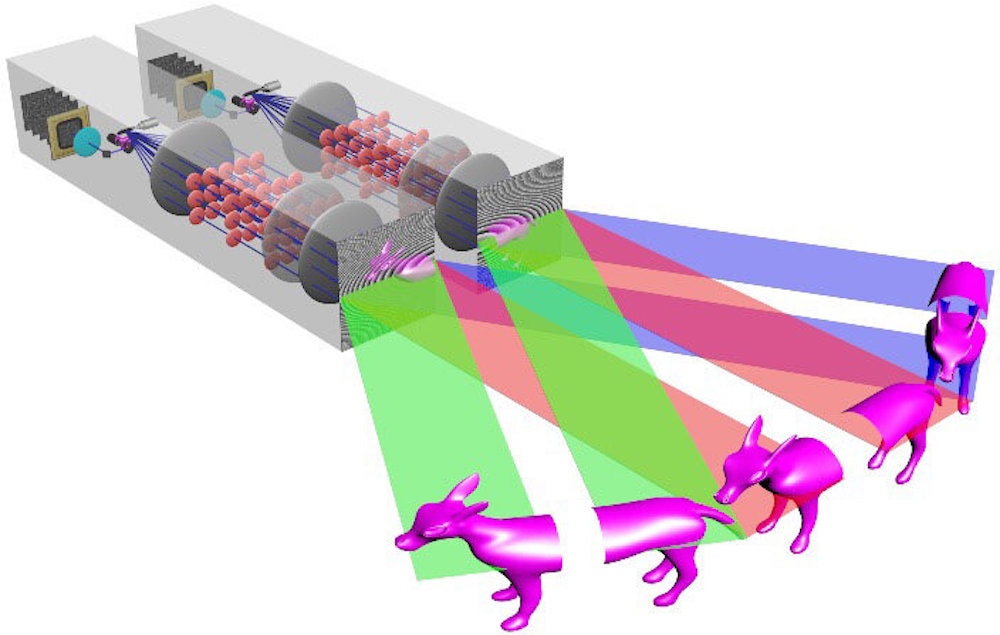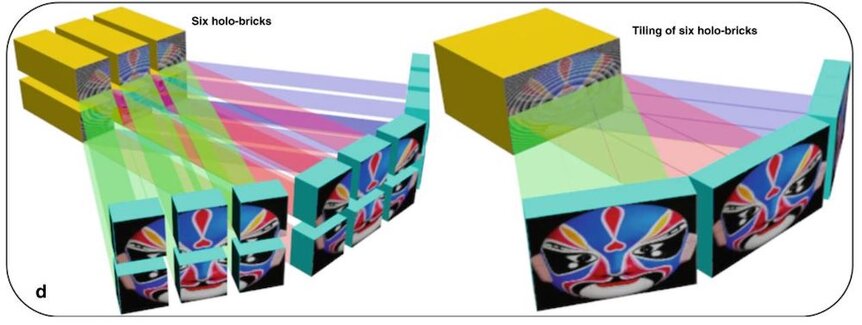Create a free profile to get unlimited access to exclusive videos, sweepstakes, and more!
Disney partners with scientists to make gigantic holograms using modular 'holobricks'
The key to building anything big is to do it one brick at a time.

There are a lot of futuristic sci-fi technologies we don’t yet have by any reasonable definition. We’re a long way from the kind of flying cars we’ve always imagined, and teleportation or lightspeed travel may never be achievable. But we do have holographic images. It’s likely you’ve seen one out in the real world at least once or twice. There are a number of ways you can go about displaying an image which looks to the observer like it exists as a three-dimensional object in real space, but each of them has their limitations.
The major challenges for commercial holography are two-fold: We’re limited by the amount of 3D information we can display and by the viewing angle. That means that holograms are often small and need to be observed from a specific distance and angle in order to appreciate them. Making a hologram larger has a solution which is both simple and bad, all you need to do is blow it up. The trouble is, that doesn’t make the image any better if the amount of information present doesn’t also increase. It’s the equivalent of zooming in on a low-resolution photo. The image gets larger, but it looks worse.
Daping Chu and Jin Li from the Centre for Photonic Devices and Sensors at the University of Cambridge partnered with Disney Research to craft a new system for holographic display which hopes to solve these problems by breaking it into smaller parts. Their findings were published in the journal Light: Science & Applications.
“If you look at a normal 3D display and count up all the resolution you have, you need a data rate of about three gigabits per second. If you want to get a 3D image of a similar resolution, you need another dimension, and the current technology cannot support it. That’s why the true holograms you see are always small, and it looks like something but it’s not satisfactory,” Chu told SYFY WIRE.
In 2D displays, getting to a larger side is relatively easy. You can tile the image and let each individual unit render a small part of a larger object. You can think of it like stacking hundreds of individual televisions into one large video display and letting each TV display only their assigned portion. Chu and his colleagues took a similar approach with their new holographic technology.
The team created individual units they’re calling holobricks, each of which has its own light engine inside it capable of producing a small hologram.
“What we have done is utilize in each holobrick the full bandwidth of the light engine. Then we use mirrors to position the different holograms for different viewing angles. Over the past few years, we’ve developed effectively tiling the 3D images in an angular way so we can spread the viewing angle to between 20 and 40 degrees,” Chu said.
Tiling holobricks solves both of the above-mentioned problems by splitting up the work among discrete bricks, allowing for the creation of larger holograms without a loss in resolution. It’s the holographic equivalent of two people wearing one half of a horse costume at Halloween.
“One holobrick produces one part and another holobrick produces the next part. When you put them together, they work like a single large hologram. In principle we could scale indefinitely,” Chu said.
The major challenges right now are cost and computing power. While the bricks can scale indefinitely in principle, in practice there are challenges in rendering each individual image in real time. Though, Chu said if someone were willing to invest the money required, they could do it.
Disney is being tightlipped about their interest in the technology and Chu was unable to share information about their potential applications, but given the history of the company it’s reasonable to assume it’s entertainment related.
For his part, Chu wanted to prove it could be done and hopes to make improvements in the technology in the future, making the bricks smaller and more affordable.
“Currently, if you want to do real video you need a dedicated computer graphics card for each brick. That creates a cost. The other challenge is how to simplify the hardware and make it flat panel, rather than the chunky column style it is now,” Chu said.
The future of commercial or home display could be built on a model of modular holographic engines which could increase in size with time. Imagine if getting a larger TV didn’t require buying an entirely new piece of equipment and instead you could just add bricks. You could turn your own living room into one of the most magical places on Earth.



























